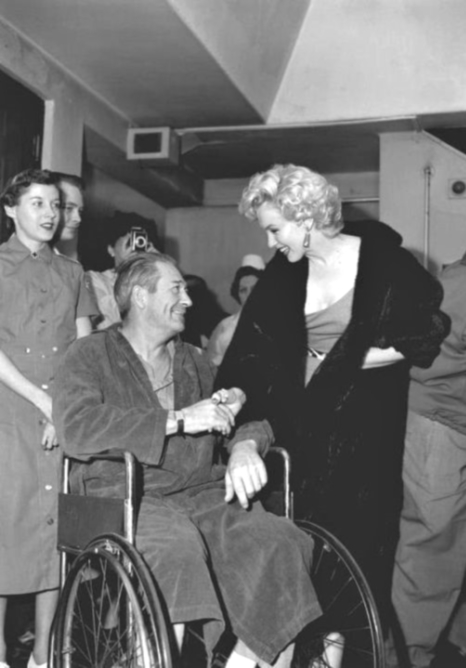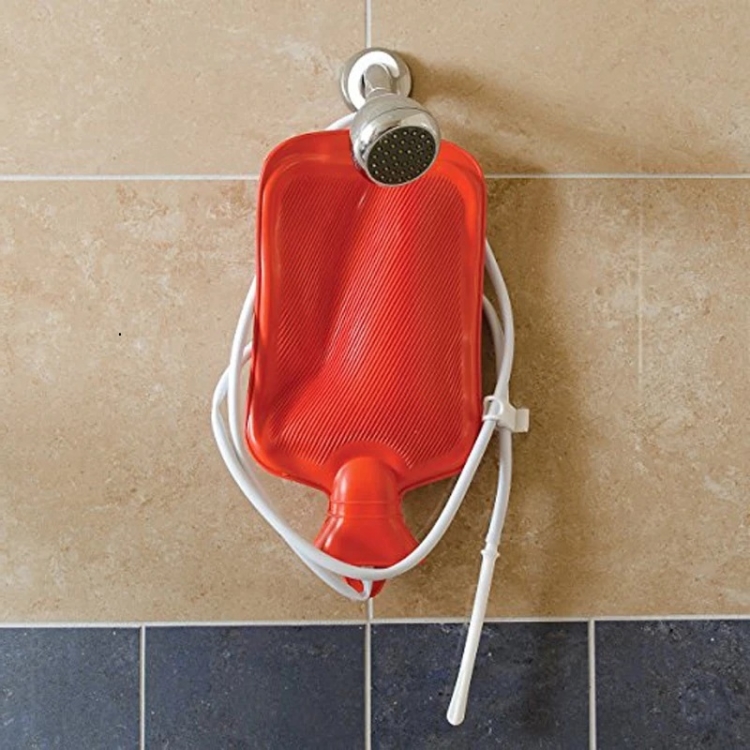The Giancana Orthodoxy
Chuck Giancana asserted the following in his memoir: the CIA notified his step-brother, mobster Sam Giancana, that Robert Kennedy planned to visit California during the weekend of August the 4th in 1962. We can conclude also that the CIA notified Giancana of the attorney general’s intention to visit Marilyn at 12305 Fifth Helena that Saturday and his intention to end their romance during his visit. That was the information for which Giancana had been waiting, his chance to entrap Robert Kennedy in a scandal involving Marilyn’s death.
Sam Giancana dispatched four assassins to murder the soon to be rejected blonde movie star. After flying into San Francisco, the assassins traveled to Los Angeles; they were Needles Gianola, Giancana’s most trusted killer, and Mugsy Tortorella along with two other hired assassins, one from Detroit and another from Kansas City.
Bernard Spindel had established an eavesdropping and listening station near Marilyn’s hacienda, according to Chuck Giancana. The killers patiently waited for Robert Kennedy’s arrival. Late on Saturday, the attorney general appeared, accompanied by another man, a doctor perhaps. The killers listened and patiently waited a little long-er. Robert Kennedy delivered his rejection; an argument developed between Marilyn and the attorney general; she was agitated; she became hysterical. He ordered his accomplice to calm his now rejected lover by injecting her with drugs. Not long thereafter, the attorney general and the other man left.
Sometime before 12:00 midnight, but as that hour approached, Needles Gianola and Mugsy Tortorella entered Marilyn’s small hacienda, found her nude and slightly drugged due to the previous injection. Marilyn resisted the intruders at first; but the two murderers easily overpowered her and forced her onto her bed. Like a team of surgeons wearing their rubber gloves, the men taped her mouth and then inserted into her rectum a lethal suppository especially formulated by the mobster chemist who had created the many chemical concoctions to be deployed against Fidel Castro, resulting in his death. Almost immediately after the suppository’s insertion, Marilyn’s anal membrane absorbed its deadly chemicals directly into her blood stream; and she died within a few minutes. In Chuck Giancana’s erudite estimation, this powerful and fast-acting suppository was the perfect instrument of murder, no vomiting nor body contortions, not a trace of evidence, nothing left in her stomach to pump out and no needle mark for a pathologist to discover. After removing the tape and cleaning Marilyn’s mouth, Gianola and Tortorella carefully positioned Marilyn’s lifeless body across her bed and staged the suicide scene. Then, just as they had entered, they slipped silently out of Marilyn’s hacienda, undetected.
The similarities between the Chuck Giancana’s account and the one provided by Fred Otash through Jeanne Carmen’s memoir are obvious: four mobster murderers dispatched by Sam Giancana arrive at Marilyn’s hacienda, two of which enter and then murder her. In Chuck Giancana’s account, the gangsters are actually named, rather colorfully I must add: Needles and Mugsy. However, Chuck Giancana’s account of Marilyn’s murder becomes difficult to accept upon a closer evaluation; and too, Chuck’s account contradicts and conflicts with all the other murder orthodoxies which involve his step-brother, those in which Sam Giancana had formed a devilish alliance with the middle Kennedy brothers and Peter Lawford.
At any rate, and to start with, Chuck Giancana stated, a point he virtually noted with a certain gangster pride, that the murderers selected to employ a suppository as their means of murder to specifically avoid leaving evidence of an injection for a pathologist to discover; but certainly that was a nonsensical statement since Marilyn had been injected already during Robert Kennedy’s earlier visit, a fact they knew due to their eavesdropping. That previous hotshot should have left evidence for Thomas Noguchi to discover during Marilyn’s autopsy; but obviously, and inexplicably, any evidence of that injection site had disappeared by the time Dr. Noguchi examined Marilyn’s body with a magnifying glass at the county morgue.
If the murderers forced Marilyn onto her bed in order to insert the suppository why did they need to place her across the bed after she expired? Additionally, Robert Maheu and James O’Connell indicated, in the depositions and testimony they gave regarding the Castro assassination attempts, that the CIA developed and produced the poison pills that they planned to deploy against the Cuban dictator, not the MOB, an obvious contradictory assertion by Giancana; and apparently, concocting those poisonous pills was not simple or easy. The MOB chemist who developed the fast-acting suppository used by Needles and Mugsy must have been an incredible genius: the type of suppository that he or she created appears to have been unavailable to medical practitioners, both in 1962 and even now; but perhaps the formula was a closely guarded secret, a special lethal suppository reserved only for MOB hits. The suppository melted almost instantaneously; Marilyn’s anal membrane absorbed it completely and directly into her blood stream also almost instantaneously; the lethal dose of drugs suspended in the suppository killed Marilyn in a matter of minutes.
In the previous section dedicated to Marilyn’s autopsy, I discussed the effect the human body imparts on drugs that have been ingested orally and drugs that have been injected hypodermically. I did not discuss suppositories in that section since discussing rectal administration of drugs will be more pertinent and effective here.
The human rectum is primarily a storage chamber, a vertical section of the large intestine approximately 4½ inches long, usually comprised of three smaller chambers, the upper portion of which accepts the sigmoid colon and the lower section of which terminates with the anal canal. The three individual chambers are defined by protrusions of the rectal wall known as Houston Valves, protrusions which help support and control fecal matter awaiting defecation.
Blood circulation to and from the rectum is unusual; the inferior mesenteric and the internal iliac arteries supply the rectum with blood; the superior rectal vein returns blood from the upper chamber while the inferior rectal vein returns blood from the lower chamber. A network of veins, anastomoses or venous plexus, along with the middle rectal vein, return blood from the central chamber. The superior rectal vein connects to the portal system and directly to the liver while the inferior and middle rectal veins connect directly to the systemic circulation system which delivers blood to the heart through the inferior vena cava and then throughout the body before reaching the liver; the anastomoses connect to both the portal and the systemic venous systems. Additionally, no clear demarcation point defines the circulation from the upper and the lower chambers; and the anastomoses often accept blood from a portion of both chambers. Dr. Noguchi did not describe the anatomy of Marilyn’s rectum; but I would be remiss if I did not note that some rectums have been discovered during autopsy to have only two chambers while others have had four.
The anal canal, which measures 1±½ inches in length, is the final part of the human digestive system and as such is the end of the large intestine. It is primarily composed of two muscles, the internal and external anal sphincters. The inferior rectal artery delivers blood to the anal canal; the inferior rectal vein accepts blood from the anal canal and delivers it to the internal iliac vein and then to the systemic circulation.
Suppositories have been used for centuries as a means of delivering drugs into the human body. Even so, a consensus regarding the effectiveness of suppositories does not exist among medical professionals, with some contending that suppositories are reliable and others contending just the opposite. An article entitled “Drug Delivery on Rectal Absorption: Suppositories”, which appeared in the International Journal of Pharmaceutical Sciences Review and Research, noted that both the degree and the speed of drug absorption from the human rectum is both lower and slower than absorption from the gastrointestinal tract. The rectum’s small area necessarily limits and inhibits drug absorption, according to the article, while also asserting that rectal absorption is simply not reliable. Moreover, additional investigation into and information from several sources, including the United States Library of Medicine, reinforced the preceding assertions and noted additionally, that drug absorption from a suppository inserted into the rectum is generally slower and less reliable than the absorption of a drug which enters the body through the stomach and the intestines.
The area of the rectum varies with individuals, of course. Still, the organ presents only a small surface capable of absorbing drugs from a suppository, approximately fifty square inches; and the lining of the rectum is smooth, meaning devoid of the finger-like protrusions known as villi. As a result, absorption will be slowed. Several other factors impact the rectum’s absorption rate: the composition of the suppository base, the particle size of the drug suspended in the base and the solubility of the base along with the active drug’s ability to synthesize with the rectal fluid and its neutral pH.
A consensus does not exist regarding just how much of a rectally absorbed drug enters the portal venous system, gets delivered to the liver where it is subjected to first pass metabolism and just how much bypasses the liver on its first trip through the body. Certainly, based on the anatomy of the rectum, which varies from person to person, as does each person’s physiology, the only reasonable position to assume, for the purpose of this discussion, is that 50% of an absorbed drug enters the portal venous system and then the liver, where a portion of it will be metabolized, and 50% of an absorbed drug does not enter the liver on its initial trip through the body. While many variables impact the delivery of drugs from a suppository inserted into the human rectum, perhaps the most important variable is the composition of the base material, its liquefaction time and its dissolvability.
Many studies have been performed to determine the bioavailability of drugs administered rectally. The percent-ages vary considerably with time and drug; however, the best statistics I uncovered during my research was from a suppository especially formulated using palm kernel oil as a base, which had a melting temperature of 91°F, and also had a formula that included 10% surfactants. At five minutes, that suppository had released approximately 20% of the 125mg of acetaminophen it contained or 25mg; and at twenty minutes, the suppository had released 100% of its acetaminophen. Yet, it must be emphasized here that the suppository employed by Needles and Mugsy would certainly have been much larger and denser than any suppository that contained only 125mg of acetaminophen. We know, from the autopsy determined concentration of Chloral hydrate and Nembutal in Marilyn’s blood and her liver, that the amount of drugs which entered her body equaled the amount found in a large quantity of pills, a dose of possibly 2500 milligrams or more, meaning that the suppository inserted into Marilyn’s rectum must have been at least 2500 milligrams; and according to my research, a suppository of that dosage would have required more time to dissolve and liquefy and therefore more time to release its content of lethal barbiturates.
Additionally, assuming that 50% of the absorbed dose passed through Marilyn’s liver initially and 50% did not, I suggest that more of the absorbed drug would have been found in Marilyn’s blood stream than in her liver, just the opposite of what the tests performed on Marilyn’s body by Abernathy indicated. And, too, if Marilyn died not long after her murderers inserted the suppository into her rectum, then chances are the suppository would not have completely melted or liquefied; and in that case, it would not have released 100% of the drugs it contained; therefore, I suggest, the concentration of the drugs in Marilyn’s blood and liver would have been far less than Abernathy’s tests determined. And in the event the suppository did not completely melt, evidence of its insertion would have been found by Dr. Noguchi. Also, according to my research, the presence of fecal matter in the rectum would have inhibited not only the absorption of the drugs through the rectal lining and membrane, but also the liquefaction and dissolution of the inserted suppository, once again, leading to remnants of its base being present in Marilyn’s rectum. While according to Dr. Noguchi’s autopsy, fecal matter was present, evidence that a suppository had been inserted was not.
And finally, just to close the loop on this discussion, the rate of liquefaction and ultimate disintegration of the palm kernel oil suppository was improved by the presence of surfactants, an unusual descriptive term created by compressing surface active agent into the word surf-act-ant. The discovery and development of surfactants is an interesting story in and of itself. Chemically surfactants are complex. The essential function they perform is complicated; however, in 1962, the type of surfactants employed in the tested suppository mentioned above would not have been available to even a MOB chemist since the industry that developed surfactant technology would not exist for essentially two decades.
So, was Marilyn murdered as described by Chuck and Sam Giancana? Certainly, while the possibility exists, the facts and the forensics more than suggest a very low probability that she was killed by a drug laced suppository. The drug certainly was not absorbed by her anal membrane as asserted by Chuck Giancana; and it is more than doubtful that any type of MOB engineered suppository would have killed Marilyn within just a few minutes, leaving no trace while also creating a high concentration of barbiturates in her blood and liver.




